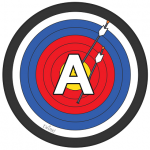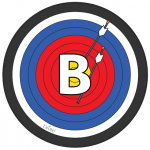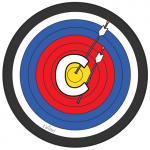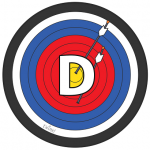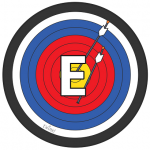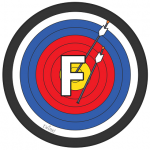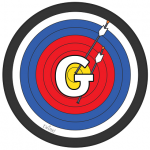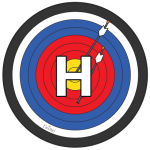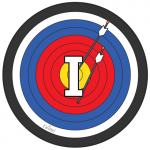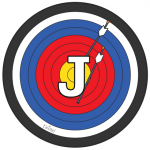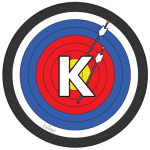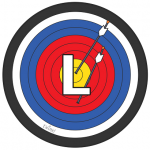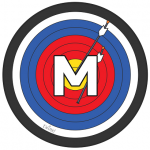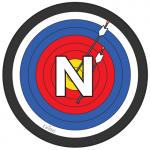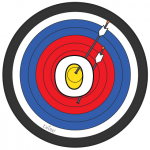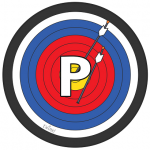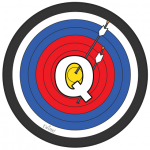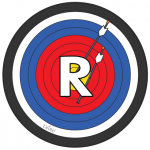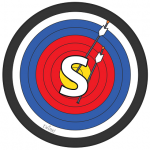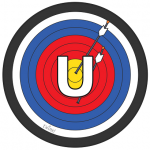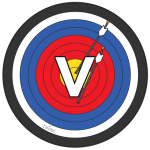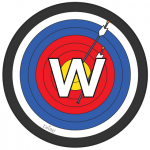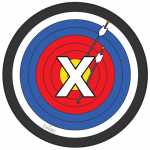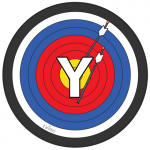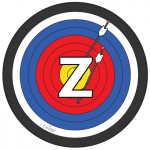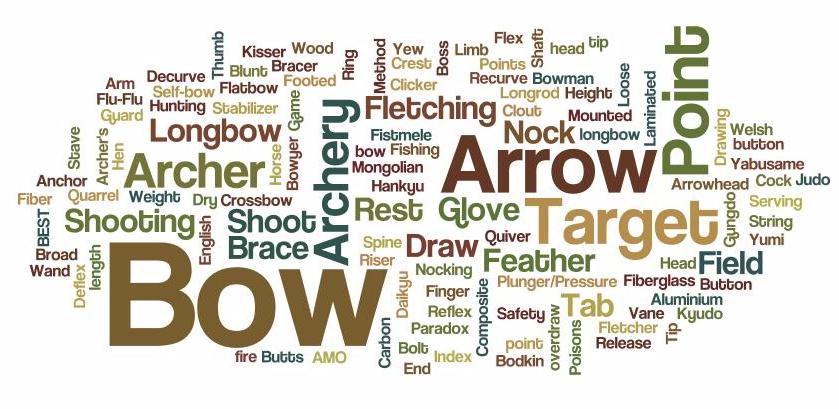 Adapted from ‘The A to Z of Archery Terms’ from www.greygoosearchery.co.uk/the-a-to-z-of-archery-terms/
Adapted from ‘The A to Z of Archery Terms’ from www.greygoosearchery.co.uk/the-a-to-z-of-archery-terms/
We’ve put together a list of archery terms which should help you understand the language used within the sport.
A/C/C
Aluminium/Carbon/Competition arrow shafts made by ‘Easton’.
A/C/E
Aluminium/Carbon/Extreme arrow shafts made by ‘Easton’.
Actual Draw Weight
The measured or calculated draw weight of an Archer.
Aim
To superimpose a sight pin on the centre of a target or, when not using a sight, the placement of the tip of the arrow on a particular point for a given distance.Anchor
A combination of points to which the bowstring and/or index finger of the drawing hand are drawn to on the face and neck.
Anchor point
Definite spot on the archers body, normally the face, on which string and index finger come to rest.
Arbalest
A medieval crossbow that needed a windlass to draw the bowstring back.
Arm guard
A piece of stiff material used to protect the bow arm from the bow string upon release, and to hold back clothing. Worn on the inside of the bow arm.
Arrow Case
A box of wood or other material to store and carry arrows. Each arrow being held separate either via foam, slots or clips to protect the feathers or vanes.
Arrow plate
A plate, adjustable or fixed, to which the arrow rest is attached.
A piece of horn, shell or leather just above the handle of a longbow where the arrow passes as it leaves the bow.
Arrow point or pile
Metal point inserted into end of arrow shaft. Can also be that the shaft fits inside the point as in wooden shafts and some carbon shafts.
Arrow rest
A projection or support on the bow or the arrow plate located in the sight window on which the arrow lies when nocked on the bowstring.
Arrowsmith
A person who makes metal arrowheads.
Ascham
A tall narrow cabinet in which bows and arrows are kept.
Axle
The bearing pin holding the wheel in the limbs of a compound bow.
(The length of a compound bow is measured from top axle to bottom axle).
Back
The side of the bow away from the bowstring.
Backed Bow
A bow which has been backed with rawhide, wood, fibre or sinew.
Ballista
A very large medieval crossbow used by an army attacking the walls of a besieged town. This crossbow was capable of firing large rocks and spears long distances.
Barebow
The discipline of shooting without a bow sight, stabilisers and release aid.
Bass or Bast
The twisted straw back of a straw mat target butt.
Belly
The side of the bow nearest the bow string. Now called the ‘face’.
Blunt point
Usually a conical rubber arrow point with a flat tip designed not to let the arrow penetrate a target, but rather bounce off.
Bob-tailed Arrow
A arrow that is thicker at the point. It tapers to the nock end.
Bodkin
A medieval type of arrowhead designed to shoot through protective chainmail or armour usually worn by Knights.
Bolt
A short arrow used in a crossbow.
Bow arm
The arm that holds the bow.
Bow hand
The hand that holds the bow.
Bowhunter
A person who hunts animals using a bow.
Bow sight
A mechanical device attached to the bow with which the archer can aim directly at the target.
Bow sling
A leather or nylon strap, fastened to either the bow or the archer’s hand, which prevents the bow from falling to the ground when the archer shoots without gripping the bow.
Bowstring
A multi stranded string of either Dacron, Kevlar or Fastflight looped to the bow nocks or teardrops.
Bow stringer
Cord with two pockets of dissimilar size or one pocket and one saddle, used to string a recurve bow.
Bow stave
A piece of wood used to make a bow.
Bow square
T-Shaped device to measure brace height and nocking point location.
Bowyer
A person who makes bows.
Brace height
Shortest distance from the string to the pivot point of the bow when strung. (Old English : Fistmele).
Bracer
A name used for an armguard. Usually used to describe the leather armguard used with a longbow.
Broadhead
A arrowhead with triangular shaped cutting blades used for hunting animals.
Bubble
See ‘level’.
Butt (Target Butt)
Any backstop to which a target face is attached
Cables
The plastic covered steel cables that connect the string via the cams or wheels to the opposite limb of a compound bow. Cables can also be made of Fastflite string material.
Cams
The wheels on a compound bow have a ‘cam shape’ to one side that controls the amount of force and the shape of the draw/force curve of the bow.
Cant
To hold the bow to the right or left while at full draw. The reference to right or left is determined by the position of the top limb.
Cast
The distance a bow can propel an arrow.
Centre serving
The protective winding on the centre of the string where the arrows are nocked.
Centreshot bow
A bow where the sight window has been cut past the bow’s centreline.
Classic style
A method of shooting with as little deviation as possible from normal relaxed body position.
Clicker
Small strip of metal mounted on the sight window in front of the arrow rest giving precise indication of full draw by snapping off the arrow point with an audible “click”.
Clout
A form of target shooting in which an arrow is shot into the air at a 15 metre diameter target on the ground at distances of up to 180 metres.
Cock feather
The feather or vane set at right angles to the slot in the nock (also called the index fletch).
Composite bow
A Bow made of more than one material. Not necessarily a laminated bow.
Compound bow
A hand-drawn, hand-held bow that for similar poundage at full draw, stores more energy than a recurve bow through the use of two cables and two eccentric wheels.
Creep
Letting the arrow move slowly forward before release (not maintaining draw length). Usually caused by loss of shoulder/back muscle tension.
Cresting
Coloured bands applied to the arrow shaft used as identifying marks.
Dacron
A synthetic material used to make bowstrings.
Dead release
A release where the drawing hand remains at the anchor point after releasing the bow string.
(No follow through of the drawing hand).
Director of Shooting
The official in charge of an archery tournament.
Doinkers
A rubber vibration dampener fitted to the ends of stabilizer bars.
The stabilizer weights are then fitted into the doinker.
Draw check
A device fitted to a compound bow so the archer can maintain a consistent draw length. Can be similar to a ‘Clicker’ as on recurve bow.
Drawing hand
The hand which draws the bow string back to the anchor point.
Draw length
The distance, measured in inches, from the pivot point of the bow to the slot in the arrow nock when at full draw.
Draw weight
The force, in pounds, required to draw a bow a distance.
(Usually stated ‘# xx @ 28′ , where xx = lbs at 28 inch draw length).
End
A set number of arrows that are shot before going to the target to score (usually 3 or 6).
Face
The surface of the bow that faces the archer.
FastFlight
A synthetic material used to make bowstrings.
Field captain
The official in charge of an archery tournament.
Field archery
An archery round in which an archer shoots from a variety of distances at targets set up in natural country.
Field point
Arrow point shaped to prevent skips if the arrow hits the ground.
Finger tab
A piece of smooth material worn on the drawing hand to protect the fingers and to give a smooth release of the bow string.
Fistmele
The Old English term for Brace Height.
Measured with closed fist resting on belly of longbow and thumb extended towards bowstring.
Flax-linen
A natural material used to make bowstrings.
Used in medieval times and now used on re-enactment longbows.
Fletch
To glue a feather or vane to an arrow shaft.
Fletcher
A person who makes arrows.
Fletching
The feathers, plastic vanes or other devices attached to the arrow shaft which stabilise the flight of the arrow.
Fletching jig
A device used to hold the arrow shaft in place and correctly locate and align the placement of the fletching.
Flight Arrow
An arrow used in Flight Shooting. Usually very light and very stiff and fitted with very small fletching to reduce wind drag.
Flight Bow
A very strong bow specifically made for flight shooting.
Flight shooting
A discipline of archery purely aimed at attaining the longest distance able to be shot with a bow.
Flinching
Moving bow arm and/or drawing hand just before release.
Flu-Flu
A arrow fitted with many feather fletches spiralled around the arrow shaft. The arrow can only be shot a very short distance due to the amount of wind drag on the feathers.
Follow through
Movement of the drawing hand/arm and bow arm after the release.
Foot markers
Lines, golf tees or other devices to indicate the archer’s foot positions at the shooting line.
Free style
A method of shooting using a bow-sight to aid the archer in aiming.
Freeze
Inability to move the sight to the desired position while at full draw, or inability to release.
Full draw
The position of the archer when the bow string has been drawn and the drawing hand is at the anchor point.
Goose feathers
The feathers of the Grey Goose were used by medieval archers due to their excellent arrow flight quality.
Grip
To hold the bow, used in reference to holding the bow, too tightly.
The handle of the bow held by the archer.
Ground quiver
A device, generally metal, pushed into the ground to hold arrows and/or bow.
Group
The pattern of arrows in the target.
Handle
The centre part of the bow exclusive of the limbs.
Heel
Exert pressure with the heel of the hand on the lower part of the handle during the shot.
Index fletching
The feather or vane set at right angles to the slot in the arrow nock (also called the cock feather).
Judo point
A arrow point fitted with spring-loaded wire prongs that will catch on grass or scrub to stop the arrow quickly.
Kevlar
A synthetic material used to make bowstrings.
Kisser button
Small protrusion placed on the bow string as an additional anchor reference point. Touches the archer’s lips, teeth or nose at full draw.
Kyudo Archery
A ceremonial style of archery, first practised in Japan over 1200 years ago, involving Zen meditation to ‘become one with the bow’.
Kyudo arrows
Traditional arrows used in Kyudo Archery.
These arrows are over 1 metre (40 inches) in length and fletched with traditional feathers.
Kyudo Bow
A Japanese longbow, approx. 2 metres (79 inches) in length. The ‘grip’ is about one third distance from the bottom tip of the bow.
Laminated bow
A bow made of several layers of different material glued together, usually two layers of fibreglass and a hardwood core.
Launcher
A style of arrow rest used extensively on compound bows. Can be a one-piece flat metal prong with a ‘v’ groove for the arrow to rest in or can be two round metal prongs set apart to suit the size of the arrow.
Left-handed archer
An archer who holds the bow in the right hand and draws with the left hand to bring the arrow back under the left dominant eye.
Left-handed bow
A bow with the sight window cut out on the right hand side when viewed from the face of the bow.
Let-off
The reduction in draw weight of a compound bow, when pulled to full draw, usually expressed as a percentage.
Level
A small spirit level, fitted in the bow sight, to indicate when the bow is being held vertical (compound bows only).
Limbs
The energy storing parts of the bow above and below the riser.
Limb Dampeners
Recently developed product consisting of a ‘mushroom’ shaped rubber form attached to the limbs of a bow to reduce the vibrations in the limbs after the release.
Limb Pocket
A recessed slot in the top and bottom of the riser, shaped to fit the ends of the bow limbs and maintain correct limb alignment.
Limb Twist
A failure in the bow limb where the bow tip turns away from aligning with the bowstring. Can be caused by over-stressing or over-exposure to very high temperatures making the laminations deflect.
Longbow
Self bow in the tradition of the old English bows, slightly deflexed and without or with minimal reflex at the bow tips, approximately 1.7 metres (5 ft. 6 inches) in length.
Loop
The woven or served looped ends of the bowstring that fit in the bow nocks when the bow is strung.
Loose
To release the bowstring. (Old English term).
Command given to archers to begin shooting, usually in battles.
Mass weight
The actual physical weight of the bow.
Nock
To place an arrow on the bow string.
Nock set
A small brass attachment added to the string to mark the nocking point.
Nocking point
The specific point where the arrow is to be nocked on the string.
Open stance
The position of the feet on the shooting line, where the left foot is behind an imaginary line extending between the archer’s right foot and the centre of the target (for a right handed archer).
Peak Weight
The maximum draw weight of a compound bow.
Peep sight
Also known as string peep. An aperture in a small round piece of plastic or metal which is used for aiming a compound bow.
Pinching
The squeezing of index and middle fingers against the arrow nock during the draw, causing deflection of the arrow.
Pivot point
That point of the grip about which the moment forces (reactions) act. Normally the physical centre of the bow.
Pluck
Pulling the string away from the face in any other direction upon release than that dictated by a correct follow-through.
Pile or point
Metal tip of an arrow.
Point of aim
A method of aiming in which the point of the arrow is sighted on an object, usually on the ground.
Poundage
Draw weight of a bow.
Pressure button
A spring loaded button in the sight window against which the arrow lies and compensates for side-ways bend of the arrow.
Quarrel
A crossbow bolt.
Quiver
Device for holding arrows. Different forms are back, belt, bow, and ground quivers.
Rebound
An arrow that bounces off the scoring area of a target.
Recurve
The end of the bow limbs that curve away from the archer when the bow is held in the shooting position.
Recurve bow
A bow that has recurve limbs.
Release
To allow the string to leave the fingers or the release aid.
Release aid
A mechanical device for releasing an arrow (compound bows only).
Right-handed archer
An archer who holds the bow in the left hand and draws with the right hand to bring the arrow under the right dominant eye.
Right-handed bow
A bow with the sight window cut out on the left hand side when viewed from the face of the bow.
Robin-Hood
A bandit archer of legend who lived in Sherwood Forest, near Nottingham, UK. Also term given to two arrows shot end to end, the second arrow embedded into the rear of the first.
Round
The shooting of a definite number of arrows at specified target faces from set distances.”Rounds” are given names, usually of towns or cities, in the country of origin.
Scope sight
A bow sight with a magnifying lens. Usually used in conjunction with a peep sight on a compound bow.
Semi-recurve bow
A bow that is neither straight nor fully recurved.
Serving
The protective wrapping of thread around the loops and centre of the bow string to protect it from wear.
Serving jig
A device that holds the serving thread and maintains consistent tension as the thread is wrapped around the bowstring.
Shaft
The arrow excluding the point, nock and vanes.
Shooting glove
A leather glove with only three fingers for holding the bowstring.
Shooting line
A line parallel to and a specific distance away from the targets from which all archers shoot.
Sight
Bow sight.
Sight extension
Bow sight extension which attaches to the bow .
Sight block
The movable part of the sight which holds the sight pin, aperture or scope.
Sight window
The cut out section of the bow above the grip.
Sling
Strap fastened to either the bow or the archer’s wrist or index finger and thumb, to prevent the bow from falling when shooting with a relaxed bow hand.
Snap shooting
Releasing the arrow without pausing to aim carefully.
Spine
The arrow’s resistance to bending, classified by hanging a 2 lb. weight at the centre of an arrow resting on two supporting points 26″ apart, and measuring the amount of the bend.
Spinwing
A type of fletch made from mylar and is ‘c’ shaped in section.
Stabiliser
An extension rod holding a small weight used to minimise the vibrations which occur during the release.
Stacking
A characteristic of bow performance where the force/draw curve rises more rapidly over the final part of the draw.
Stance
The position of the feet and body assumed when addressing the target.
String
A cord used to shoot a bow, ready for shooting and to propel the arrow in the act of shooting.
String jig
An adjustable frame used to make bowstrings.
Stringer
A device to aid in the stringing of a bow.
String alignment
The placement of the string when at full draw in relation to the bow sight or the bow.
String angle
The angle formed by the string at the nocking point when at full draw. (also pinch angle).
String fingers
The fingers used to draw back the bow string.
String hand
Drawing hand, the hand used to pull the bowstring.
String height
Brace height or fistmele.
String peep
Peep sight
Tackle
An inclusive term for archery equipment.
Tackle line
A line, set behind the shooting line, behind which is placed all such equipment which is not used during shooting (also equipment line).
Take-down bow
A bow which can be taken apart, the limbs can be detached from the riser, for ease of travelling, storage and limb change-over.
Target captain
The person who decides who is to call the value of each arrow, record the scores and draw the arrows from the target.
Target face
The paper which is attached to the butt and indicates the scoring areas.
Target Panic
A mental condition causing a loss of control in shooting form.
Symptoms can include; aim freezing, snap shooting, flinching and trigger punching.
TFC
Torque Flight Compensators are adjustable rubber vibration dampeners fitted to stabiliser rods, usually on v-bars.
Tiller
To shape the limbs of an unfinished bow for even bending.
Torque
Any rotation or twisting motion of the bow in the horizontal plane.
Toxophilite
A devotee of archery.
Trigger
The mechanism in a crossbow to release the bowstring.
To release the bowstring using a release aid.
Tune
To adjust the arrow rest, pressure button, string height and nocking point height to achieve good arrow flight out of the bow.
Ultralite
A model of aluminium arrow made by ‘Easton’.
Vane
Plastic fletching.
V-bar
A short extender fitted between the riser and long stabiliser that allows two short stabiliser rods to be added as a counter balance to the long stabiliser.
Windage
The adjustment of the bow sight or the pin on the bow sight to allow for the wind deflecting the arrow.
Windlass
A medieval device to pull the bowstring back on a crossbow.
X7
A model of aluminium arrow made by ‘Easton’.
XX75
A model of aluminium arrow made by ‘Easton’.
X10
Currently the best model of aluminium/carbon arrow made by ‘Easton’.
Yarn tassel
A large tuft of yarn that is used to wipe mud and dirt from arrows.
Usually made of Club colours or to archers personal choice.
Yew
The wood of a European evergreen tree used for making medieval longbows.
There are currently no archery terms beginning with the letter Z
